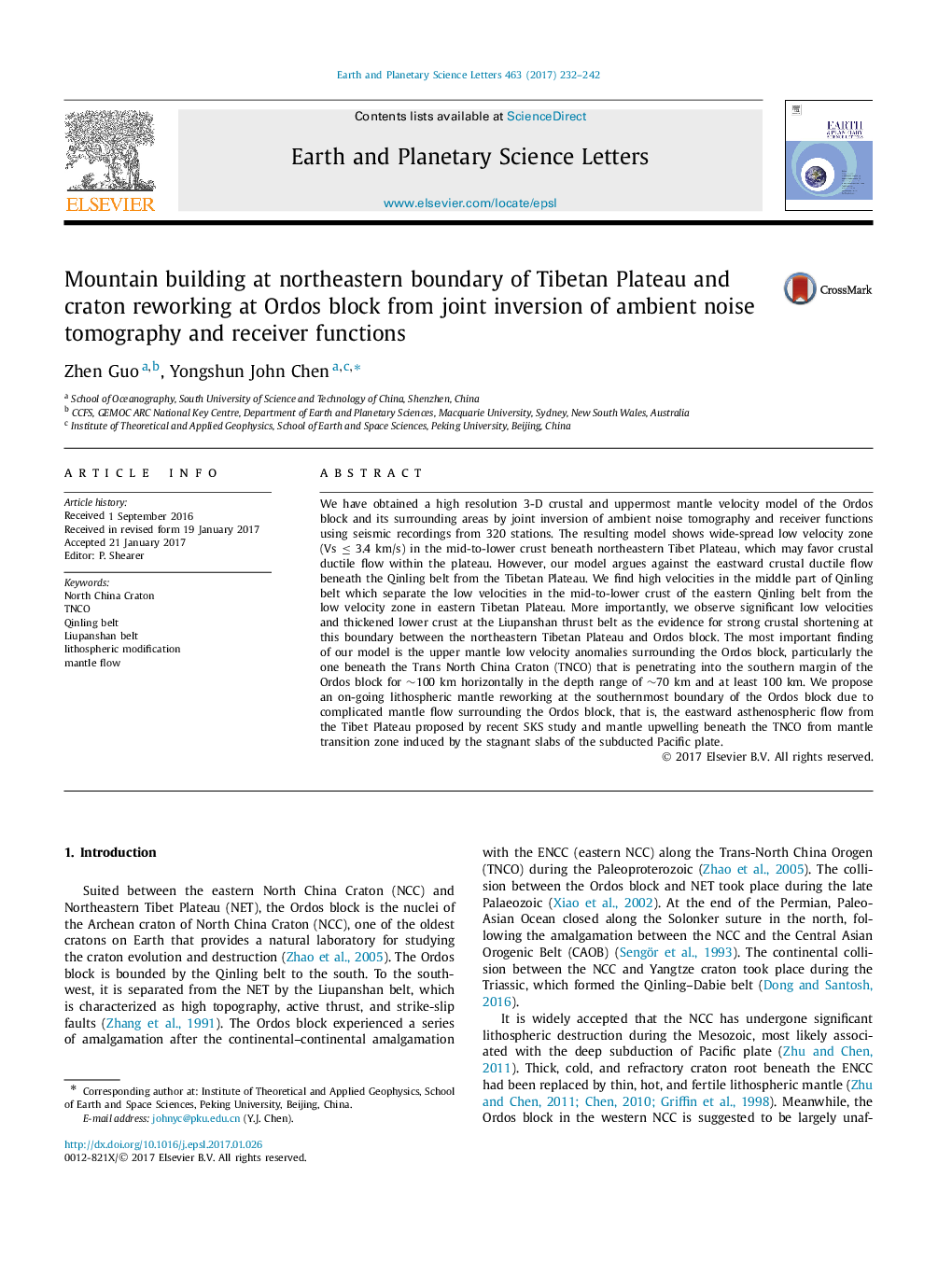| Article ID | Journal | Published Year | Pages | File Type |
|---|---|---|---|---|
| 5780107 | Earth and Planetary Science Letters | 2017 | 11 Pages |
Abstract
We have obtained a high resolution 3-D crustal and uppermost mantle velocity model of the Ordos block and its surrounding areas by joint inversion of ambient noise tomography and receiver functions using seismic recordings from 320 stations. The resulting model shows wide-spread low velocity zone (Vs ⤠3.4 km/s) in the mid-to-lower crust beneath northeastern Tibet Plateau, which may favor crustal ductile flow within the plateau. However, our model argues against the eastward crustal ductile flow beneath the Qinling belt from the Tibetan Plateau. We find high velocities in the middle part of Qinling belt which separate the low velocities in the mid-to-lower crust of the eastern Qinling belt from the low velocity zone in eastern Tibetan Plateau. More importantly, we observe significant low velocities and thickened lower crust at the Liupanshan thrust belt as the evidence for strong crustal shortening at this boundary between the northeastern Tibetan Plateau and Ordos block. The most important finding of our model is the upper mantle low velocity anomalies surrounding the Ordos block, particularly the one beneath the Trans North China Craton (TNCO) that is penetrating into the southern margin of the Ordos block for â¼100 km horizontally in the depth range of â¼70 km and at least 100 km. We propose an on-going lithospheric mantle reworking at the southernmost boundary of the Ordos block due to complicated mantle flow surrounding the Ordos block, that is, the eastward asthenospheric flow from the Tibet Plateau proposed by recent SKS study and mantle upwelling beneath the TNCO from mantle transition zone induced by the stagnant slabs of the subducted Pacific plate.
Keywords
Related Topics
Physical Sciences and Engineering
Earth and Planetary Sciences
Earth and Planetary Sciences (General)
Authors
Zhen Guo, Yongshun John Chen,
